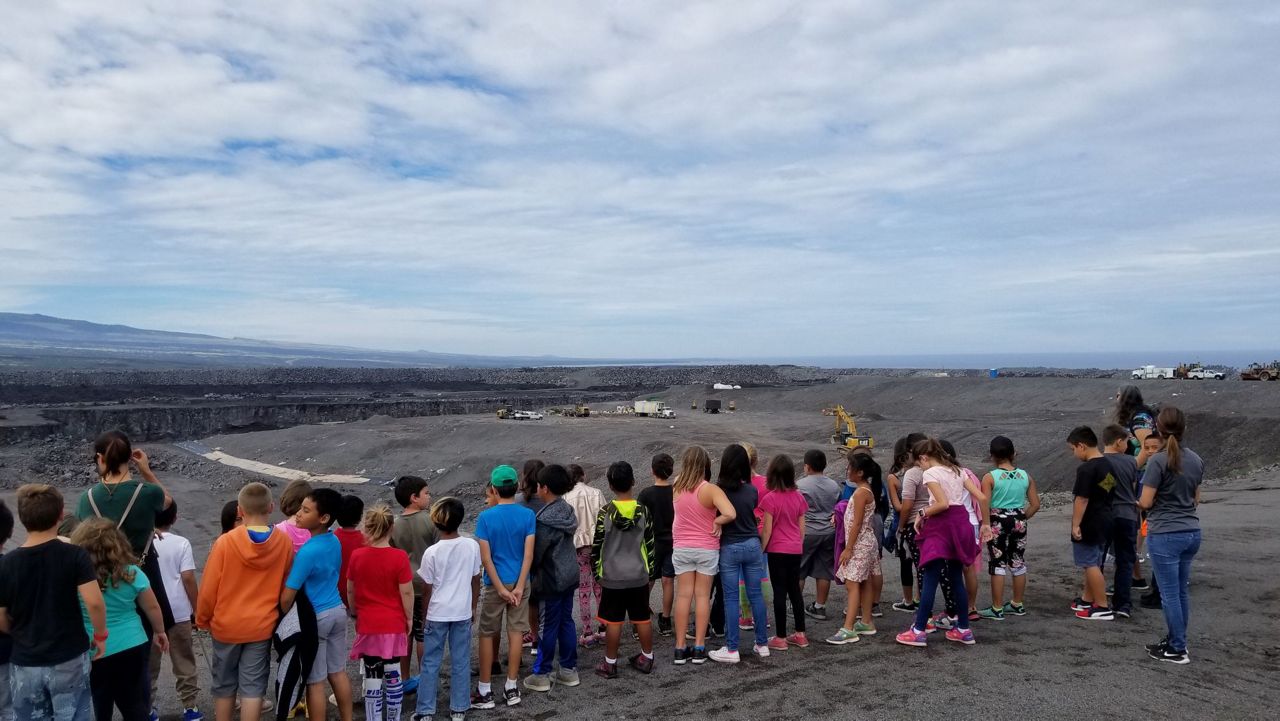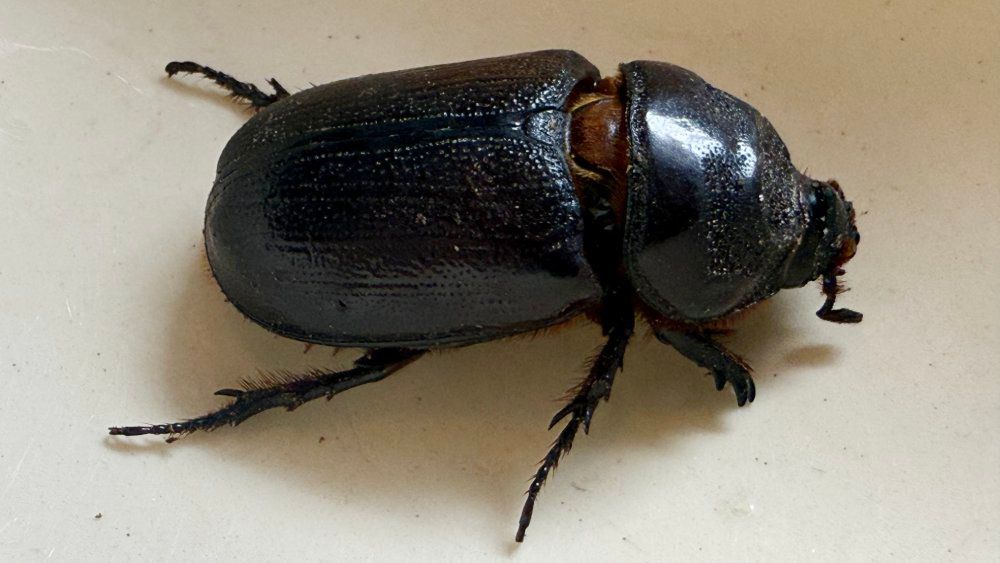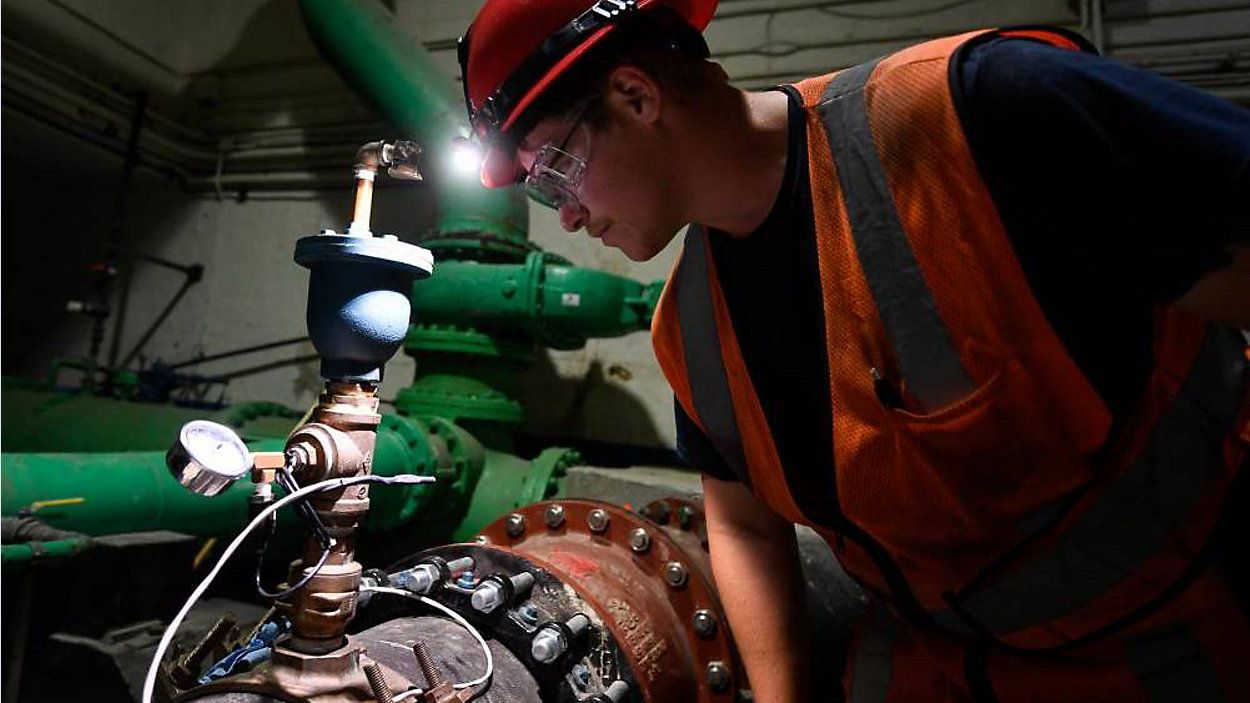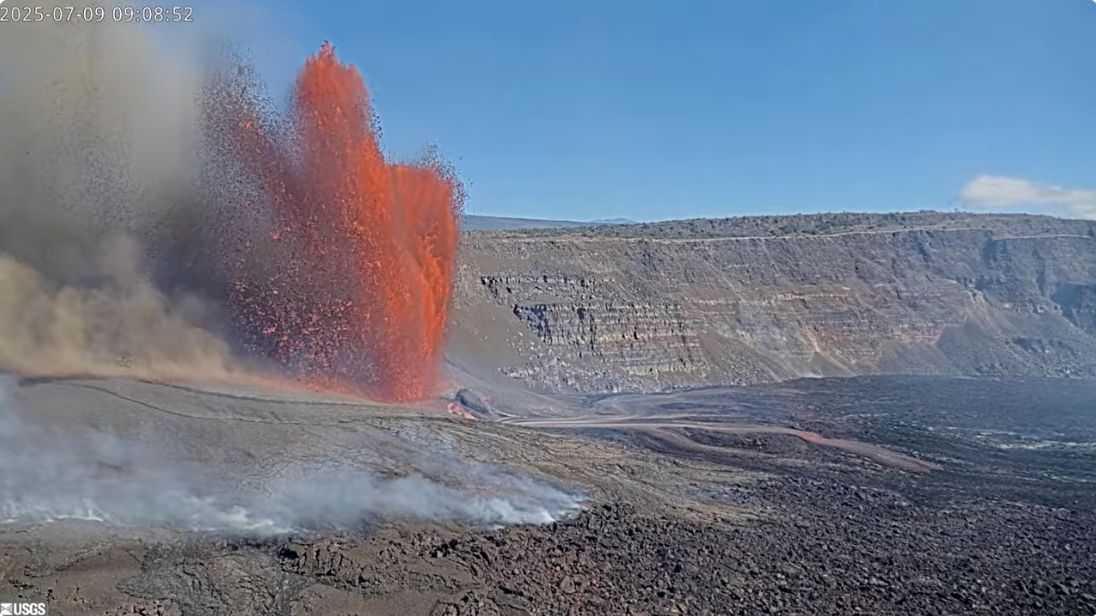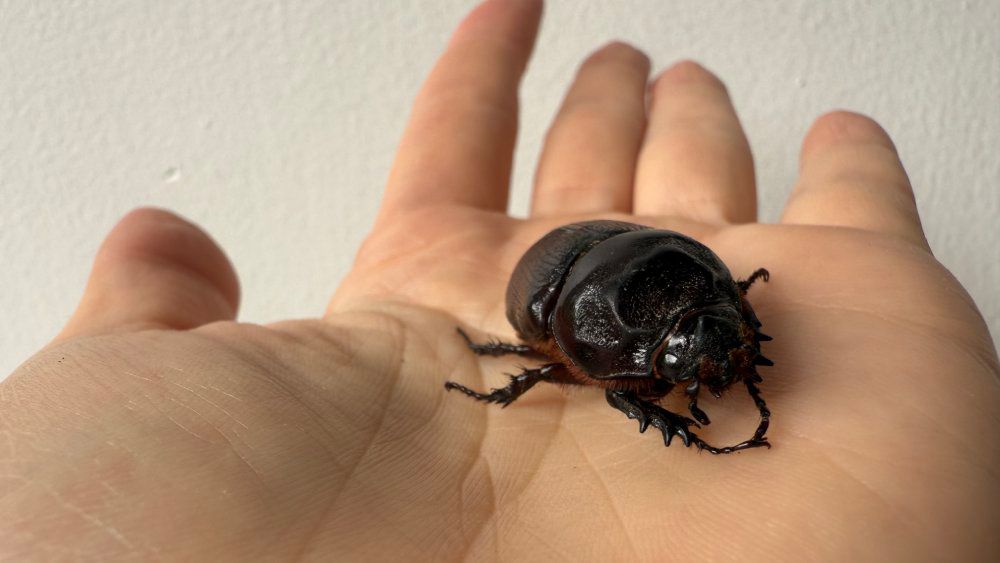This is the third part in a four-part series on trash and recycling, with articles about Oahu, Kauai, Maui and Hawaii Island.
Hawaii Island residents and businesses created 203,872 tons of waste in fiscal year 2022. A large amount of that trash went to the landfill.
However, the County diverted about 50,646 tons of that trash from the landfill. Most of the diverted waste was compostable green waste (36,363 tons) and scrap metal (10,098 tons). The rest included paper (2,358 tons), plastics #1 and #2 (221 tons), glass (755 tons) and other materials.
Living on an island where the limited amount of space is always a concern, there are big questions about the future of our landfills. By recycling, we keep waste out of the landfill.
How recycling works
At recycling and transfer stations, Hawaii Island residents may drop off cardboard and brown paper bags in one bin and small glass containers in another bin.
The County opens the recycling bins from 8 a.m. to 4 p.m. Check the days of the week that the recycling and transfer stations are open before heading out.
Take recyclables out of any bags before dropping them in the bins. Residents should flatten all corrugated cardboard before placing it in the cardboard and brown paper bags bin. Don’t bring cardboard contaminated with food or other residue, like a pizza box.
The County does not accept any containers with the label HI5 in the small glass container bin, but wine bottles, liquor bottles, jam and jelly jars, baby food bottles, pickle jars, mason jars, makeup containers and perfume bottles are all accepted. Clean and rinse these recyclables and remove all lids or caps. Labels do not need to be removed.
Business Services Hawaii, which is contracted by the Hawaii County Department of Environmental Management, collects the glass and crushes it to use in landscaping. The public can pick it up for free by reaching out to the Business Services Hawaii at (808) 966-7489.
In the scrap metal bins at select recycling and transfer stations, residents may recycle small clean metal cans for soup, pet food, canned meat and vegetables. For more details about what other types of scrap metals may be accepted, check individual location’s websites or call ahead.
The Hawaii Department of Health runs the HI5 program, which exists on all the islands. The HI5 program allows for cans and bottles with the HI5 label to be exchanged for 5 cents. Beverage containers must be 2 liters or smaller and made of glass, plastic or aluminum.
The 5-cent fee provides an incentive to bring the bottle container to a redemption center. Redemption centers are located throughout the island.
For more detailed information about how the HI5 program works, read the first article in this series on waste and recycling.
On Dec. 1, 2018, Hawaii County stopped accepting plastics with the #5 (polypropylene), plastic grocery bags and clamshell-type plastic containers. On Oct. 16, 2019, the County stopped collecting the remaining plastics, those with #1 and #2 on them. (However, the HI5 program still collects plastics #1 and #2 on Hawaii Island.)
When asked why Hawaii County stopped accepting plastics, Hawaii County Department of Environmental Management officials said in an email to Spectrum News Hawaii that “the market does not allow for recycled plastics,” and that “there is no local outlet on the island who can benefit from plastic recycling.”
A collection of Hawaii County Department of Environmental Management officials provided information for this article, including Director Ramzi Mansour, Deputy Director Brenda Iokepa-Moses, Acting Recycling Coordinator Craig Kawaguchi, Recycling Specialist Chris Chin-Chance, Solid Waste Division Chief Michael Rivera and Deputy Division Chief Michael Kaha.
Hawaii County’s decision to no longer accept plastics came after China limited the recyclable commodities it would accept and restricted the amount of contamination it would allow in the bales of plastic and mixed paper sent to the country.
After the types of recyclables that were accepted decreased in 2018, contamination in the drop-off recycling program increased.
“Contamination of recyclables and ‘wish-cycling’ of nonrecyclable materials are recurring issues with recycling. The County periodically runs campaigns to educate the public on proper recycling techniques,” Hawaii County DEM officials said.
The recyclables collected at the drop-off bins are sold to foreign markets or the U.S. mainland. Corrugated cardboard is sold to Taiwan, scrap metal is sold to Taiwan and other East Asia countries, and as was mentioned earlier, small glass containers are recycled on Hawaii Island.
In fiscal year 2022, it cost the county $456,644 to recycle cardboard and $8,183 to recycle small, non-HI5 glass.
Instead of shipping recyclables to foreign markets, the County could build a recycling plant.
Hawaii County has considered starting its own recycling plant to process recyclables, according to the DEM officials. Budgetary constraints, union concerns, regulatory and permitting requirements, and acquiring contracts to sell the recyclables were all listed as reasons that a recycling plant has not been built.
“The County will continue to consider the feasibility of all options,” the DEM officials said.
Kristine Kubat is the executive director of Recycle Hawaii, a Hawaii Island-based nonprofit that is developing infrastructure for recycling. She said it’s hard to promote recycling on Hawaii Island, since the County accepts only a few recyclables. Her nonprofit hopes to create resource recovery parks, where individuals who have cleaned and sorted their recyclables would bring them, and they would accept more types of recyclables than the County.
The resource recovery parks would also be a place where people could bring a mattress to be reused or an appliance that wasn't working so it could get fixed. She said it would take the principles of a zero waste economy and put the value back into items by turning them into new commode or fixing them.
She described a resource recovery park as a fun, clean place where residents would want to go with their family. There would be events at them, like at a fair, and people could only gain admission if they brought their recyclables.
“Humans have been resourceful for far longer than they've been wasteful,” said Kubat. “This idea that we're just all a bunch of slovenly waste makers, who can't be trained to do the right thing with something when we don't want it anymore is just wrong. And the challenge is to provide an opportunity that is enjoyable, family oriented.”
Kubat said her nonprofit is currently working to fundraise for the project.
“We are working with the private sector right now to raise funding to establish resource recovery parks on Hawaii Island,” said Kubat. “We're also looking at federal infrastructure funding.”
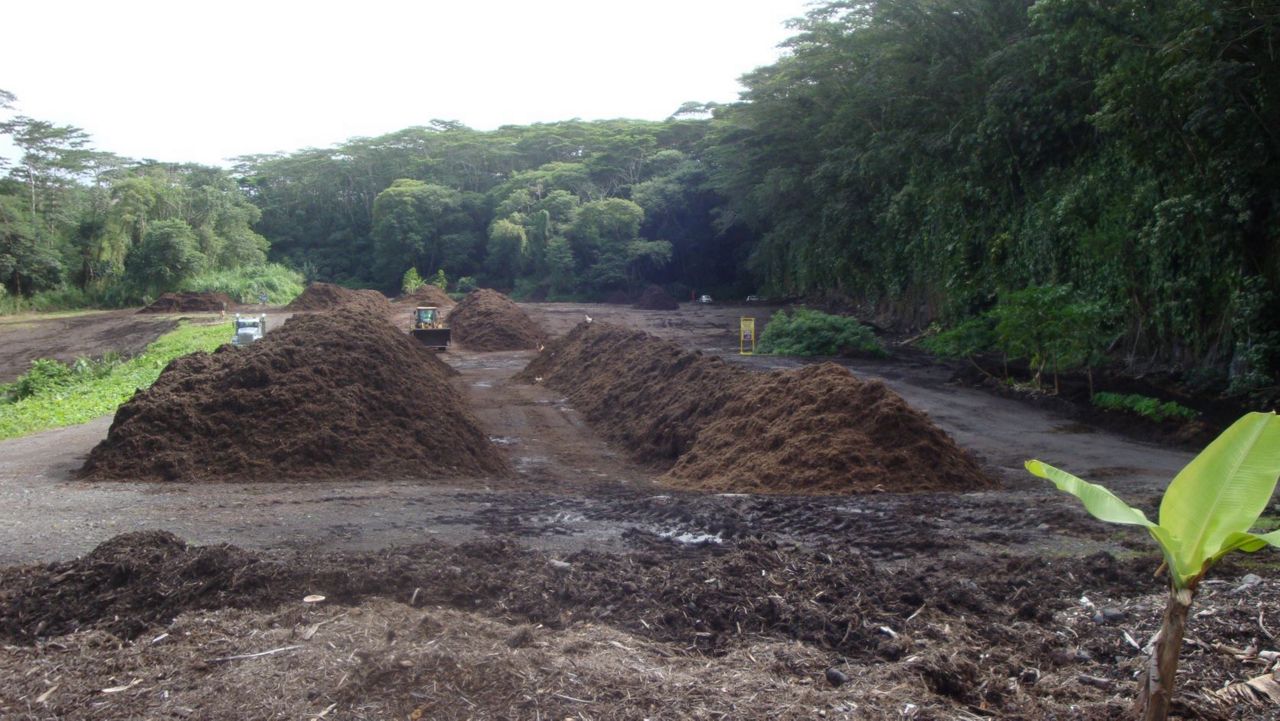
Green Waste
In a landfill, green waste is buried and decomposes without oxygen, which releases a large amount of methane. Instead of sending green waste to the landfill, it can be turned into mulch and soil.
Hawaii County started its green waste diversion program in the mid-2000s. The County contracts with Hawaiian Earth Recycling to operate, maintain and recycle green waste at the East Hawaii Organics Facility, West Hawaii Organics Facility and the Kealakehe Mulch Public Pick-up Area at an annual cost of approximately $4.5 million.
Items accepted at the East Hawaii Organics Facility and the West Hawaii Organics Facility include palm fronds, leaves, trees, shrubs, bushes and hedge cuttings, grass clippings, untreated and unpainted wood pallets, logs, branches or other material less than 18 inches in diameter or 5 feet in length. At Transfer Station Collection Sites, material must be 6 inches in diameter and 5 feet in length or less.
Items that are not accepted include garbage bags, food waste from businesses, farms or nonprofits, lumber, sawdust, plastics, rocks, dirt, glass, metal, treated or painted pallets and invasive species. Because of concerns about Rapid Ohia Death, people should not bring any ohia plant material to green waste collection sites and should instead compost it on site.
Residents can drop off their green waste at the Hilo, Keaau, Kealakehe, Keei, Pahoa, Volcano and Waimea Transfer Stations. Green waste that is dropped off at Hawaii County’s collection bins is hauled to the East Hawaii Organics Facility or West Hawaii Organics Facility to be processed into mulch. Residents can also drop green waste off directly at the East Hawaii Organics Facility or West Hawaii Organics Facility. For information about days and times the aforementioned locations are open, click here.
In West Hawaii, the green waste is ground into mulch and is left to dry. This mulch may be picked up for free at the Kealakehe Mulch Public Pick-up Area and the West Hawaii Organics Facility.
In East Hawaii, the green waste is first ground into mulch and left to dry. It then undergoes a process where it must reach a temperature of 131 degrees Fahrenheit for 15 days to destroy harmful bacteria, weed seeds and invasive species, such as the little fire ant, coqui frogs or Rapid Ohia Death. Once the mulch completes this process, residents can pick it up for free at the East Hawaii Organics Facility.
For information about days and times the mulch pick-up locations are open, click here.
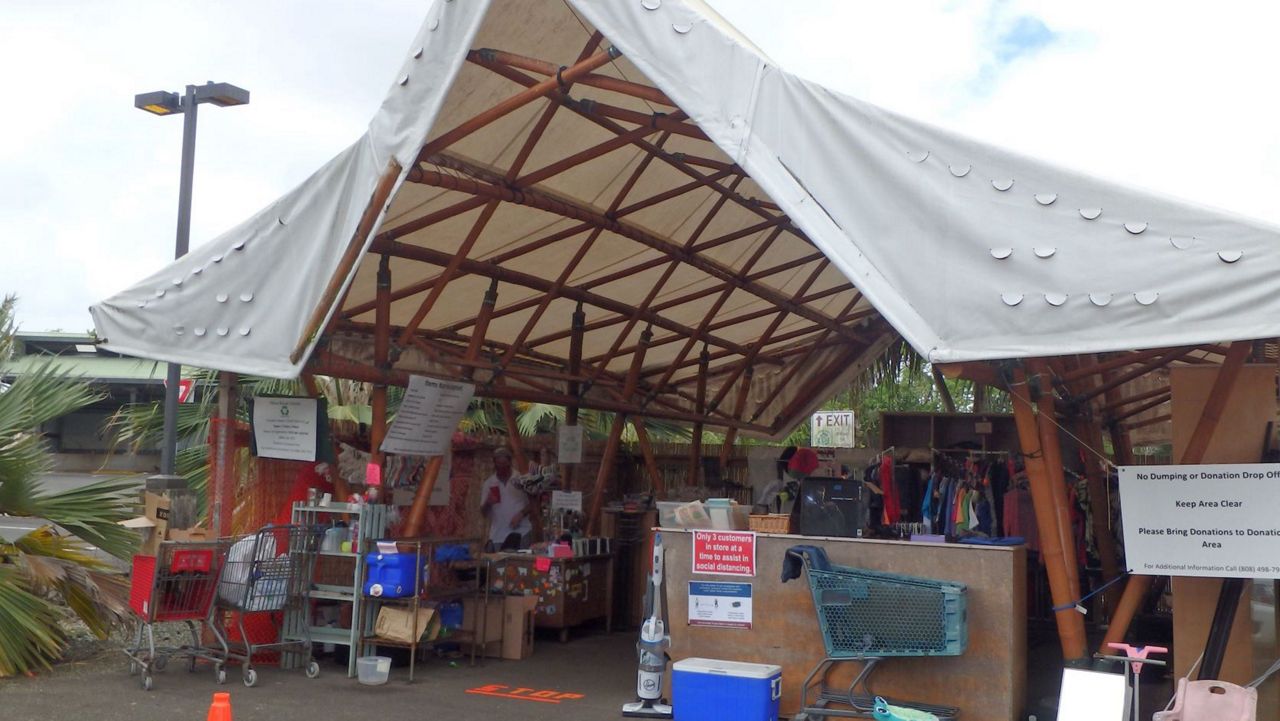
Before recycling, reduce and reuse
Hawaii County opened its first “Reuse Center,” similar to a thrift store, at the Keaau Transfer Station in 2003. Now, Hilo, Keaau, Kealakehe, Keauhou, Laupahoehoe, Pahoa, Waimea and Waiohinu Transfer Stations have Reuse Centers.
“We need to reinforce the idea of reduce, reuse, recycle. Items such as clothes, furniture, toys, latex paint and more that are gently used can be donated which makes needed items available to those who can’t afford to buy them new, thus extending the life of usable items and keeping valuable resources out of the landfill. If the public has anything that is reusable, they are welcome to bring them to these centers,” the DEM officials said.
In 2007, the County Council passed a resolution to adopt zero waste goals. Hawaii County incorporated zero waste goals into the most recent version of the Integrated Solid Waste Management Plan, which was approved in 2021.
The DEM officials said Hawaii County will reach its zero waste goals by recycling and diverting trash from the landfill, using waste-to-energy technologies, and supporting extended producer responsibility legislation.
Extended producer responsibility legislation requires manufactures to take responsibility for disposing of post-consumer products. For example, Hawaii County said it supported the State Legislature’s passage of Act 151, which requires manufacturers of computers, printers, televisions and other electronic devices to provide free collection services for used products once a month. The manufacturers must then transport and dispose of the electronics.
In 2014, Hawaii County banned the use of plastic bags. The DEM officials acknowledged single-use plastic bags are only a small fraction of the waste created annually, but said it was an important step in reducing waste and encouraging the public to switch to using reusable bags.
“Since the Plastic Bag Reduction Ordinance was implemented we received anecdotal reports that there is less wind-blown plastic bag litter. Another objective of the PBRO was to reduce the chance that wildlife would mistake plastic bag litter as food,” the DEM officials said.
In 2017, Hawaii County passed the Polystyrene Foam Food Container & Food Service Ware Reduction Ordinance. With this ordinance, the County prohibited food vendors from using polystyrene foam (often called “Styrofoam”), and they are required instead to use recyclable or compostable food service ware. There are some exceptions to the law: it doesn’t include straws, cup lids, utensils, food-related bags and wrappers, packaging for unprepared food, pre-packaged items such as bread, cookies, milk, juice, snacks, candy, nuts and others, and packaging for raw meat and eggs. Sashimi and poke are not exempt.
The DEM officials said the ordinance was aimed at reducing the amount of wind-blown polystyrene foam food container litter, stopping wildlife from mistaking polystyrene containers for food and encouraging the public to consider reusable alternatives. Compostable food service wares reduce the amount of waste landfilled and instead biodegrade, eventually becoming soil.
In order to reduce waste, the DEM officials also encouraged businesses to design products to be more easily recyclable, reusable or less toxic.
“After businesses have applied the strategies of reduction and reuse and they still have waste to be recycled, they can contact local recycling companies to assist them with their recycling plans. Also, businesses should be more cognizant of the products they import to the island that may create recycling challenges and become hazards for landfill material,” the DEM officials said.
The future of the landfill
The West Hawaii Landfill will be full in about 20 years. Finding a location for the next landfill is a concern, according to the DEM officials. They said it will be challenging to find a location for a future landfill because of stringent regulations and costs related to planning, environmental regulations, design and construction that will take many years to complete. It will also require community support.
Currently, there isn’t a landfill that serves Hilo and the east side of Hawaii Island.
“At this time it’s under consideration,” the DEM officials said about building a landfill to serve the east side of the island.
Oahu incinerates trash at H-POWER and turns it into electricity. (Read more about H-Power in the first article in this series.)
The DEM officials said Hawaii County is in discussion with the City and County of Honolulu and private entities in order to learn more about the possibility of building a waste-to-energy facility.
“The Solid Waste Division is exploring waste-to-energy options to generate fuel for transportation, minimize its carbon footprint and mitigate climate change,” the DEM officials said.
However, JoAnn Yukimura, who is the vice president of Zero Waste Kauai, told Spectrum News Hawaii that waste-to-energy is not the answer, because it requires always having a source of trash.
“The County of Hawaii, over our objections, has a waste-to-energy study going right now,” said Yukimura. “It requires that we always have a source of trash and a good source of trash to make it economically feasible. For small populations, like our neighbor islands, it’s never feasible.”
“Our goal if we want a sustainable system is to reduce that stream of traffic to a trickle, because we are reducing, reusing or recycling,” she added.
Michelle Broder Van Dyke covers the Hawaiian Islands for Spectrum News Hawaii. Email her at michelle.brodervandyke@charter.com.





